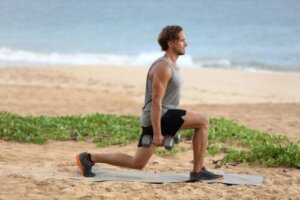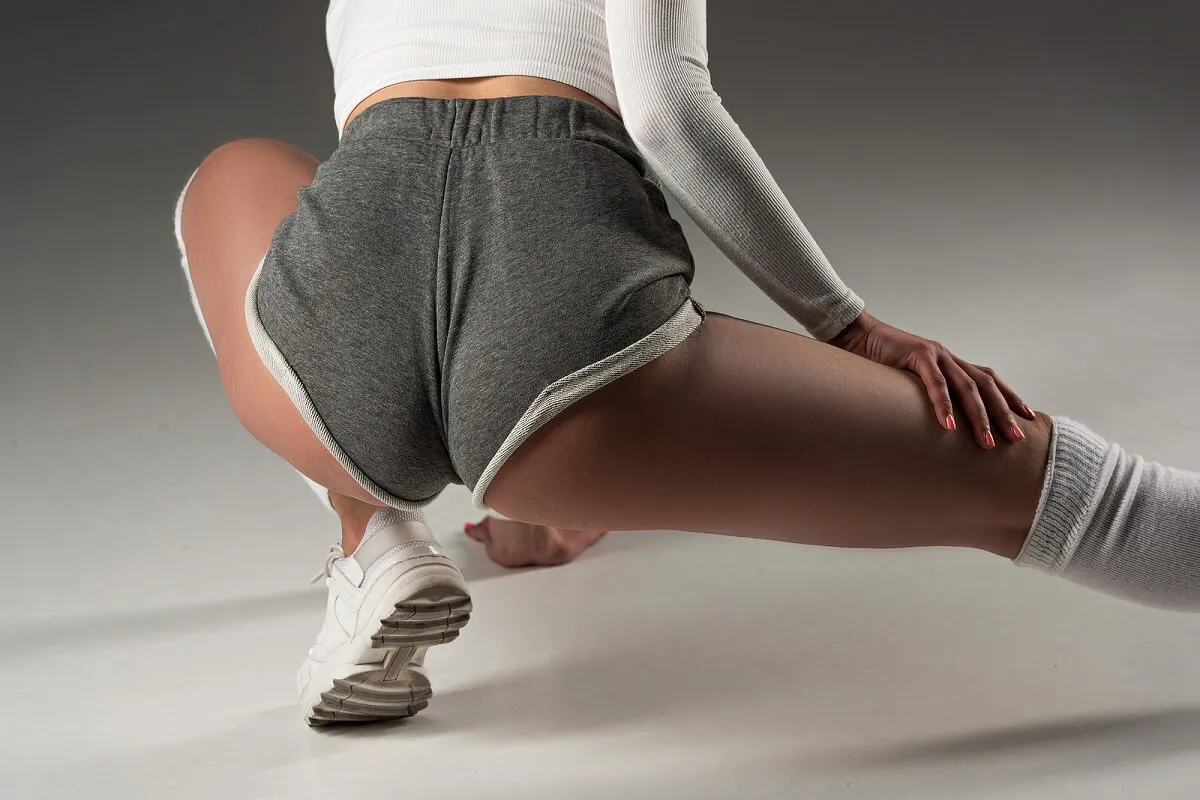The Farmer's Walk: Technique, Benefits and Muscles Worked


Reviewed and approved by the doctor Diego Pereira
The farmer’s walk is a key exercise in strength competitions such as CrossFit. It consists of weighted walks, more precisely dumbbells, which are done over set distances. It’s practiced as a functional exercise due to its movements.
Although it’s a very popular exercise among gym fanatics, it’s not free of prejudices and mistakes when it comes to executing it. Today, we’re going to teach you everything you should know about it so you can properly include it in your weight training routine.
Muscles worked in the farmer’s walk
As a reminder, the farmer’s walk consists of steps that you do for several meters holding a pair of dumbbells with your arms stretched out. The distance you choose according to the capacity of the place, it can be from a couple and even 30 or 40 meters, as it’s frequent in strongman competitions.
For this reason, the training involves almost all the muscles of the body. Some actively and others passively (to maintain balance). The most important ones that are worked during a session are the following:
- Gluteus muscles: the gluteus Maximus, gluteus medius and gluteus minimus allow the extension of the hip when making each step. Its participation is active, with some research even suggesting that this is the main beneficiary of a farmer’s walk routine.
- The quadriceps: of course, it would be impossible to do the walks without the main muscle of the legs, the quadriceps. They take most of the weight and prevent it from falling on the knees.
- The hamstrings: although they do not participate as actively as the previous ones, they are activated when picking up the dumbbells from the ground and during the flexion of each step.
- The abdominals: keeping the torso straight is only possible with the help of the abdominal muscles. In this exercise, every one is involved, from the rectus abdominis to the obliques.
- The trapezius and shoulders: since the weight falls dead on the outstretched arms, the trapezius and to a lesser extent the shoulders contract to support and prevent it from swinging sideways. The greater the distance you travel, the more they are activated.
Other muscles involved are the calves, lumbar, spinal erectors, forearms, biceps, and triceps. As you can see, this is a multifunctional exercise with which you work all the major muscle groups in one session.
How is it performed?

We think you may also enjoy reading this article: This Is the Simple 15-15-15 Routine that Keeps Jennifer Aniston in Shape at 53
At first glance, doing the farmer’s walk seems very easy. The difficulty increases as you add more weight. The first thing you need to do is to clear the area where you will perform it. In a gym, this can be tricky, but if you do it at home or another space, make sure you won’t encounter any obstacles along the way.
Also, mark out the exact distance you’ll be walking. You can mark the exact spot with tape or even place an object (a small disc, a water bottle) marking the end of the route. There’s no minimum or maximum distance. You can start with 10 meters and then increase it to 15 or 20 according to your progress or possibilities.
Once you have considered this, you will proceed with the help of the following steps:
- Choose two dumbbells of the same weight. These should present a challenge when completing the distance, but at the same time allow you to do it without injury or compromising your posture.
- Place them on either side of your legs and stand with your back straight and your eyes firmly on the start of the goal.
- Relax your shoulders and, taking care of your back, bend down and pick up the dumbbells from the floor.
- Secure your grip and start walking with your back straight and without any sideways imbalance.
- Make sure your gaze is fixed toward the end (not on the dumbbells or your feet). Also make sure your shoulders are pulled back, with your chest facing forward.
- Make sure your steps are regular. That is to say, ensure that each one covers the same distance as the other.
- When you get there, bend down to release the dumbbells. Rest for 60 seconds and repeat the return.
If the load is too heavy, then you can extend the rest time up to three minutes. Keep in mind that a set is a round trip. Four or five are recommended according to your goals.
Common mistakes to avoid
If you apply the execution we have outlined you should have no problems with injury or other muscular complications. The important thing is the amount of weight you choose. You can do several trials to determine how much you can handle. Do it in back-and-forth movements – these complete a set.
In case you do one of these with imbalances towards your flanks or uneven steps, it’s best to remove a couple of kilos during the first session. You can then increase them based on your progress, so don’t despair if it’s your first attempt. Apart from this, other common mistakes you should avoid when doing the farmer’s walk are the following:
- Not contracting the shoulder blades
- Hunching your back
- Not following a straight line when completing the walk
- Making a poor grip with the dumbbell (it can throw you off balance or even allow you to drop it midway through)
- Choosing dumbbells that are not the same weight
- Doing the exercise with a barbell (although nothing prevents you from doing it, the classic execution is with dumbbells, discs, or adapted instruments)
- To cover a very short distance (even if you do it with a lot of weight)
- Keep your shoulders taut and keep them close to your neck
If you avoid doing all these things, then you will be doing the farmer’s walks like an expert. Remember always to look straight ahead, so you avoid accumulating tension in your neck.
The health benefits of farmer’s walk

Like this article? You may also like to read: UFC World Champion Leon Edwards Shares His Workout Routine and Training Tips
As an exercise with functional characteristics, the farmer’s walk is useful to improve balance and coordination. You can apply this in your day-to-day life, from carrying groceries from the car to the cupboard with greater dexterity, to being able to hold your children or nephews in your arms and walk with them without getting tired so quickly.
It can also relieve back, shoulder, or neck pain. It will give you more vitality and strength to do everyday tasks. If your aspirations are strictly focused on training, including a farmer’s walks routine will help you in the following ways:
- You increase your strength and endurance.
- You improve your core to make stable movements.
- You enhance your lung capacity (if you do them at a certain speed).
- You involve many muscle groups in a single movement. This can be useful when you don’t have the time or interest to do a specific routine for each one.
Some studies have suggested that a routine of several sets of farmer’s walk can as efficiently engage muscles like those engaged with deadlifts. All in all, this is a must-try exercise, whether your goals are to gain strength/muscle mass or just improve some day-to-day skills.
All cited sources were thoroughly reviewed by our team to ensure their quality, reliability, currency, and validity. The bibliography of this article was considered reliable and of academic or scientific accuracy.
- Stastny P, Lehnert M, Zaatar A, Svoboda Z, Xaverova Z, Pietraszewski P. The Gluteus Medius Vs. Thigh Muscles Strength Ratio and Their Relation to Electromyography Amplitude During a Farmer’s Walk Exercise. J Hum Kinet. 2015 Apr 7;45:157-65.
- Winwood, P. W., Cronin, J. B., Brown, S. R., & Keogh, J. W. A biomechanical analysis of the farmers walk, and comparison with the deadlift and unloaded walk. International Journal of Sports Science & Coaching. 2014; 9(5): 1127-1143.
This text is provided for informational purposes only and does not replace consultation with a professional. If in doubt, consult your specialist.








